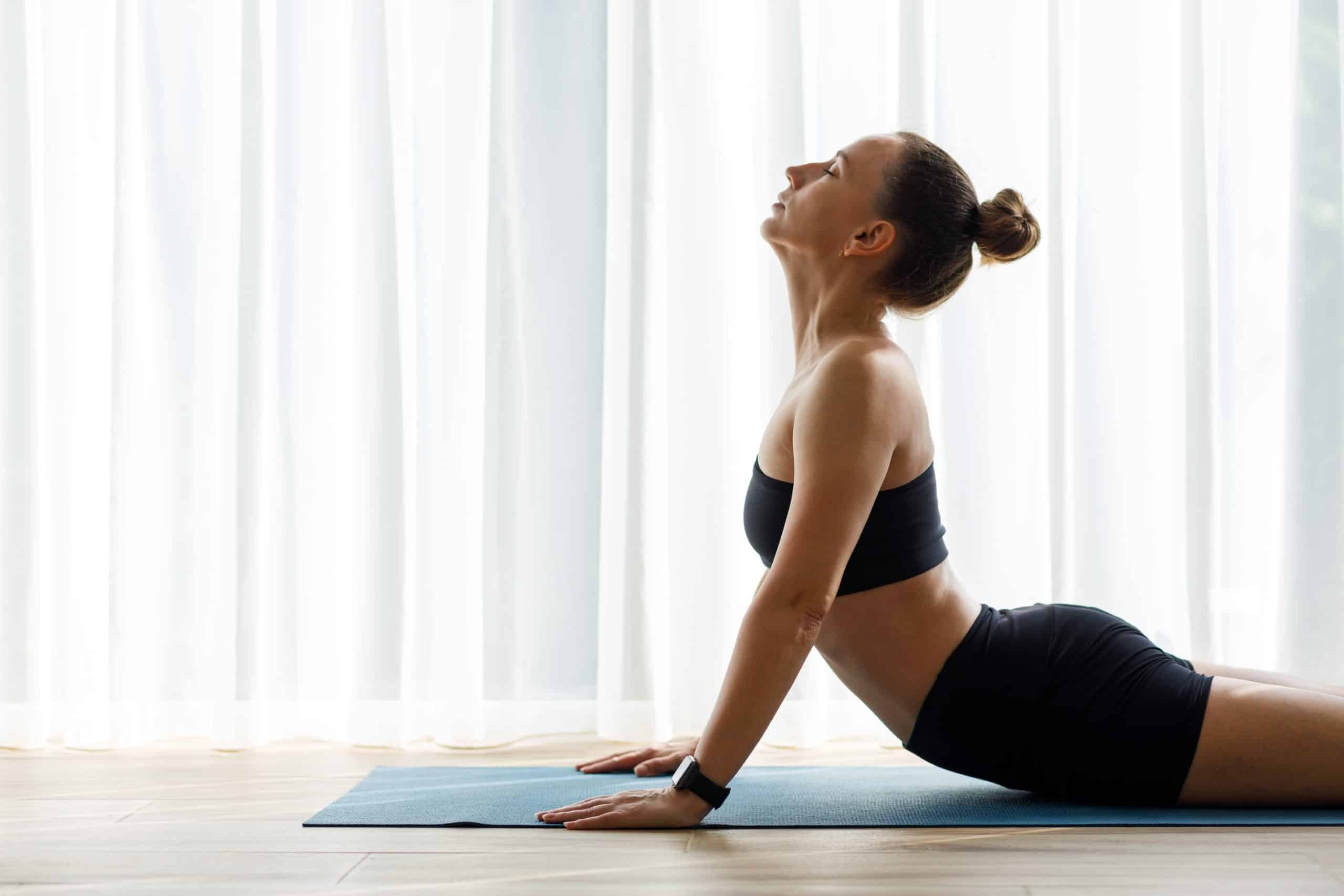Poor posture and tight core muscles often go hand in hand. If your back hurts after a long day, or your movements feel restricted, your core might need more than strength training. Stretching the core muscles can unlock tension, improve posture, and enhance your ability to move freely. A strong, flexible core supports everything from walking and sitting to lifting and balance.
The core is not just your abs. It includes the muscles of your lower back, hips, and pelvis. These core stretches are simple, safe, and effective for all fitness levels and can be added to any morning or evening routine.
Here are the best core stretches to improve posture and mobility naturally.
1. Standing Side Stretch
This stretch targets the obliques, the muscles running along the sides of your torso. Tight obliques can cause stiffness and lead to poor spinal alignment.
How to Do It:
- Stand with feet shoulder-width apart.
- Raise your arms overhead and clasp your hands.
- Gently lean to one side without twisting your body.
- Hold for 20 to 30 seconds and repeat on the other side.
Why It Helps:
This stretch improves lateral flexibility, opens the ribcage, and reduces tension around the spine. It also encourages deeper breathing, which supports posture.
2. Seated Spinal Twist
A tight spine often limits how well your core functions. Twisting stretches loosen the muscles of the back and waist while improving spinal mobility.
How to Do It:
- Sit on the floor with your legs extended.
- Bend your right knee and cross it over the left leg.
- Place your right hand behind you and your left elbow outside the right knee.
- Gently twist your torso to the right.
- Hold for 30 seconds, then switch sides.
Why It Helps:
Twisting activates deep core muscles, stretches the lower back, and encourages spinal alignment. It’s a great stretch for improving posture, especially after sitting for long periods.
3. Cobra Stretch (Bhujangasana)
The cobra stretch opens the front of the body and strengthens the lower back. It reverses the effects of slouching and helps re-align the spine.
How to Do It:
- Lie face down with palms under your shoulders.
- Inhale and lift your chest off the ground while keeping your elbows slightly bent.
- Keep your hips grounded and look forward.
- Hold for 20 to 30 seconds.
Why It Helps:
This pose stretches the abdominal muscles and hip flexors while reducing pressure on the spine. It encourages proper spinal curvature and supports a more upright posture.
4. Child’s Pose with Side Reach
This gentle, relaxing stretch targets the lower back, sides of the torso, and lat muscles. Adding a side reach enhances the stretch in the obliques and hips.
How to Do It:
- Begin in a kneeling position and sit back onto your heels.
- Stretch your arms forward on the mat.
- Walk both hands to the right and hold for 30 seconds.
- Return to center and repeat on the left side.
Why It Helps:
Child’s pose releases deep tension in the back and ribs. The side variation improves flexibility in the torso, making it easier to sit or stand upright.
5. Cat-Cow Stretch
A classic yoga movement, the Cat-Cow stretch brings awareness to the entire spine. It mobilizes the vertebrae and warms up the core muscles gently.
How to Do It:
- Start in a tabletop position on your hands and knees.
- Inhale and arch your back, lifting your tailbone and chest (Cow).
- Exhale and round your spine, tucking your chin toward your chest (Cat).
- Repeat for 5 to 8 rounds.
Why It Helps:
This flow relieves stiffness in the spine, improves range of motion, and activates core stabilizers. It’s ideal for mornings or to unwind after a long day.
6. Bridge Pose
While bridge pose is often seen as a strength move, it also acts as a dynamic stretch for the hip flexors, abs, and lower back. Holding it improves both posture and pelvic alignment.
How to Do It:
- Lie on your back with knees bent and feet hip-width apart.
- Press your feet into the ground and lift your hips upward.
- Keep your arms by your sides and hold for 20 to 40 seconds.
Why It Helps:
This movement strengthens the glutes and stretches the front body. It helps reset the pelvis and supports spinal stability, which is key for good posture.
7. Supine Twist
This gentle reclined stretch targets the lower back, spine, and obliques. It’s helpful for releasing tension before bed or after long periods of sitting.
How to Do It:
- Lie on your back and hug both knees to your chest.
- Drop your knees to one side while keeping your shoulders grounded.
- Extend the opposite arm and turn your head the other way.
- Hold for 30 seconds and repeat on the other side.
Why It Helps:
Supine twists relax the spine, realign the vertebrae, and stretch the waist. They improve circulation in the lower back and reduce postural imbalances.
Tips to Make the Most of Core Stretching
- Always warm up before stretching, even if it’s just walking in place for a few minutes.
- Focus on slow, deep breathing during each stretch to enhance muscle release.
- Avoid pushing into pain. Stretches should feel gentle and relieving.
- Aim for at least three sessions per week for noticeable improvement in posture and mobility.
Final Thought
A mobile and flexible core is the foundation of a strong, pain-free body. By regularly practicing these core stretches, you can improve your posture, prevent stiffness, and move more freely throughout the day. Whether you’re working at a desk, on your feet all day, or just looking to feel better in your body, these movements can make a lasting difference. Start slow, stay consistent, and watch your body transform from the center out.










